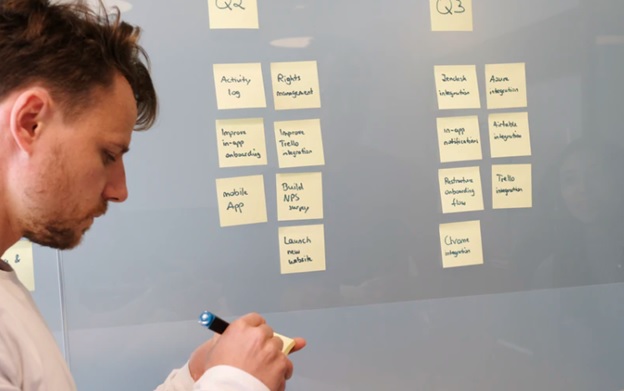A Kanban Board is not What You Think
Many people think that the purpose of a Kanban board for a manager is simple – to see what status each task is in and what each employee is doing. In fact, it is more complicated than that. And the main value of the board is not the control of employees, but the analysis of the work process “as a whole” and the search for points for improvement. Let’s look at examples of what’s behind a Kanban board and how to use it.
If you search Google for the answer to the question “What is a Kanban Board?”, you will get the following answers:
In this article I will tell you how Kanban Board helps in the work of the manager. But first let’s look at the components of a Kanban Board.
Table of Contents
What does a Kanban board consist of? Example.
A department’s work in implementing a product or project consists of different stages. At each stage some value is added to the product (project) and, moving from stage to stage, there is a more and more ready-to-use product (or project is completed).
Each work stage can be displayed on the board as a column with an appropriate name. The column symbolizes the actions, the work that needs to be done to add value to the product or move the project forward.
Here we see several columns-stages, and in the columns stickers symbolizing tasks. Different colors of stickers are used for different types of tasks. Above each sticker on the board, a marker is signed with the name of the person who is currently doing the task.

As work is done, the task sticker moves across the board from left to right, from initiation to completion (the “done” column).
Usually, one column corresponds to one step. And there can be a lot of these steps, which makes it hard to read the information from the board, and forces people to focus only on the steps they understand, ignoring the rest. It’s much better if there aren’t too many columns – 5-7 – otherwise the board gets cluttered, and it’s harder to use. To simplify the board, you can merge columns where the same people are working on the task, and specify specific jobs on the sticker itself as a checklist.
Work item
If the columns denote some kind of work, how do you name what moves between the columns? It can’t be a task for some part of the work, like “analyzing requirements” or “checking results”, because all the steps of the work are already reflected in the form of columns.
What is a Kanban Board really?
It may seem that a Kanban board is just a tool for controlling the work of subordinates. In fact, it is not, and the meaning of a Kanban board is quite different. A kanban board is a reflection tool, a tool for understanding how a work process is organized and what managerial decisions should be made to accelerate and optimize it.
To explain why this is the case, let’s dive a little bit into history. The idea of visualizing the workflow, and managing its characteristics, originated in the 1950s at Toyota. It was trying to win the competition for the Japanese car market, with very limited demand.
A holistic view and efficiency analysis
Toyota managers were not interested in each employee’s workload, but in the efficiency of the entire work process. Roughly speaking, how quickly a car comes off the assembly line at the right quality.
It turned out that loading each area by 100% can not speed up, but slow down the production of the final product, or even make it economically unprofitable.
It’s all about those very inventories that pile up in front of the production areas. If you think of these stock piles as queues in which a part has to “stand” before it can be processed, then it turns out that the longer the queue of parts before each stage, the longer a single part will move along the conveyor.

